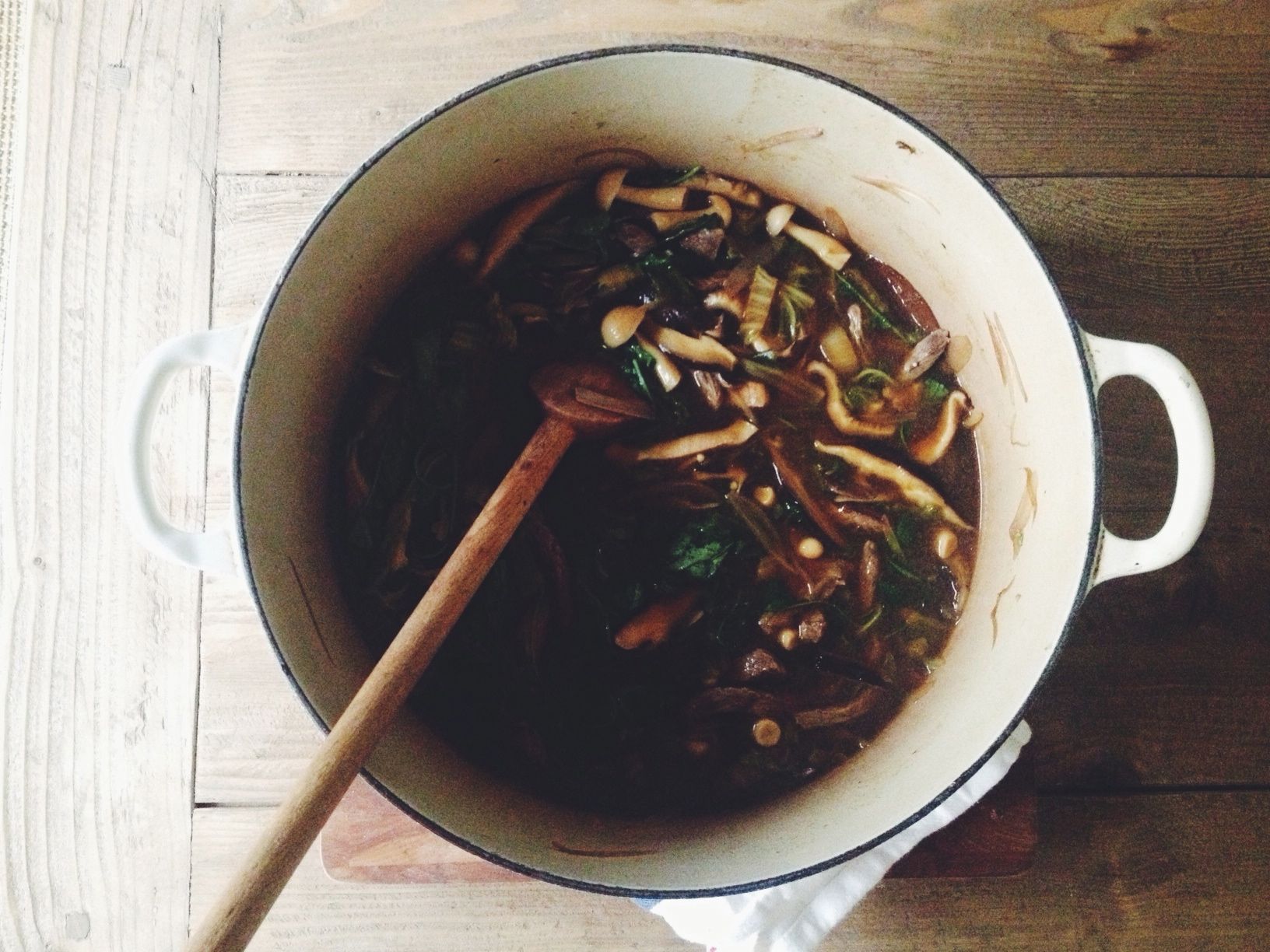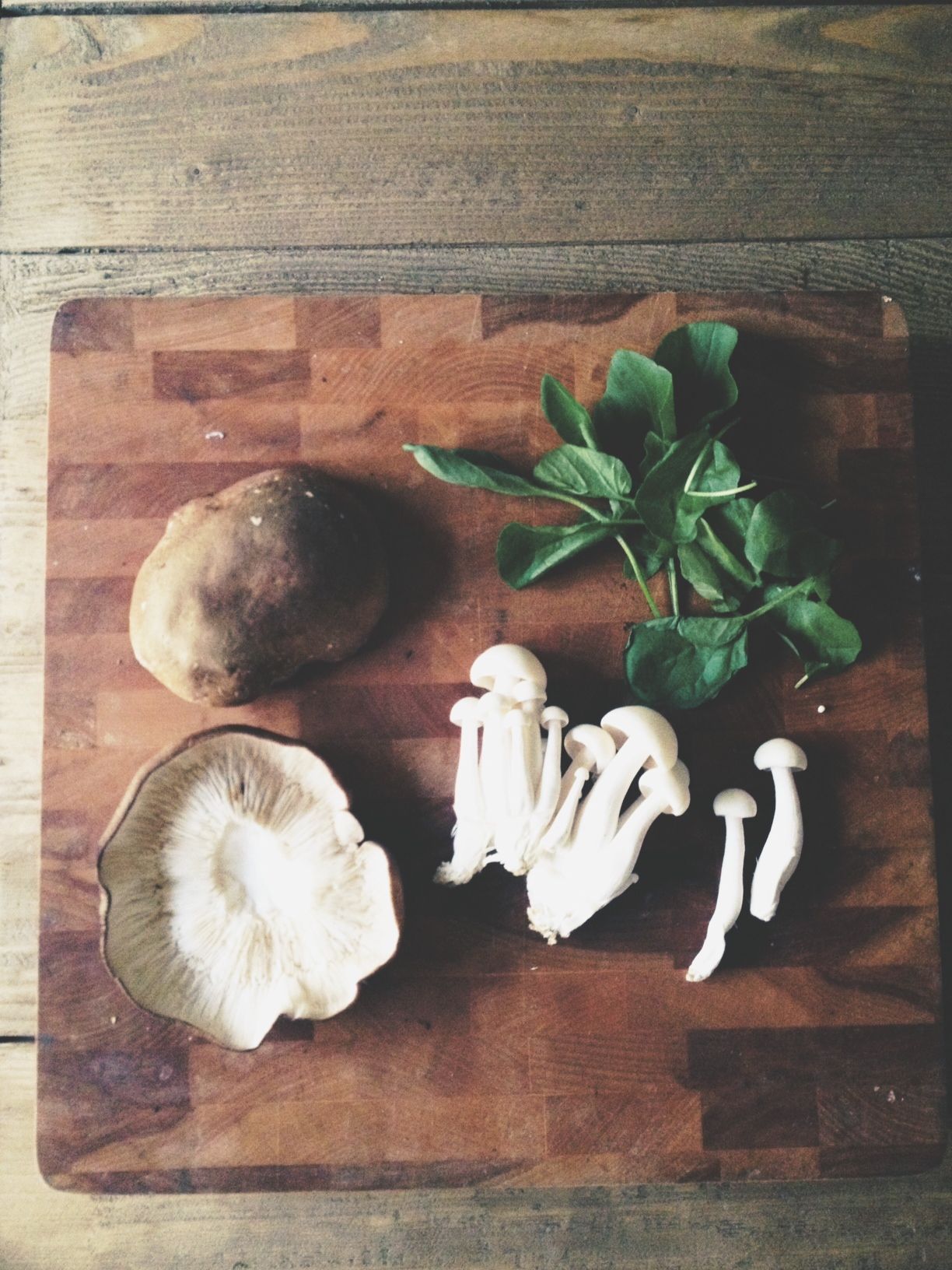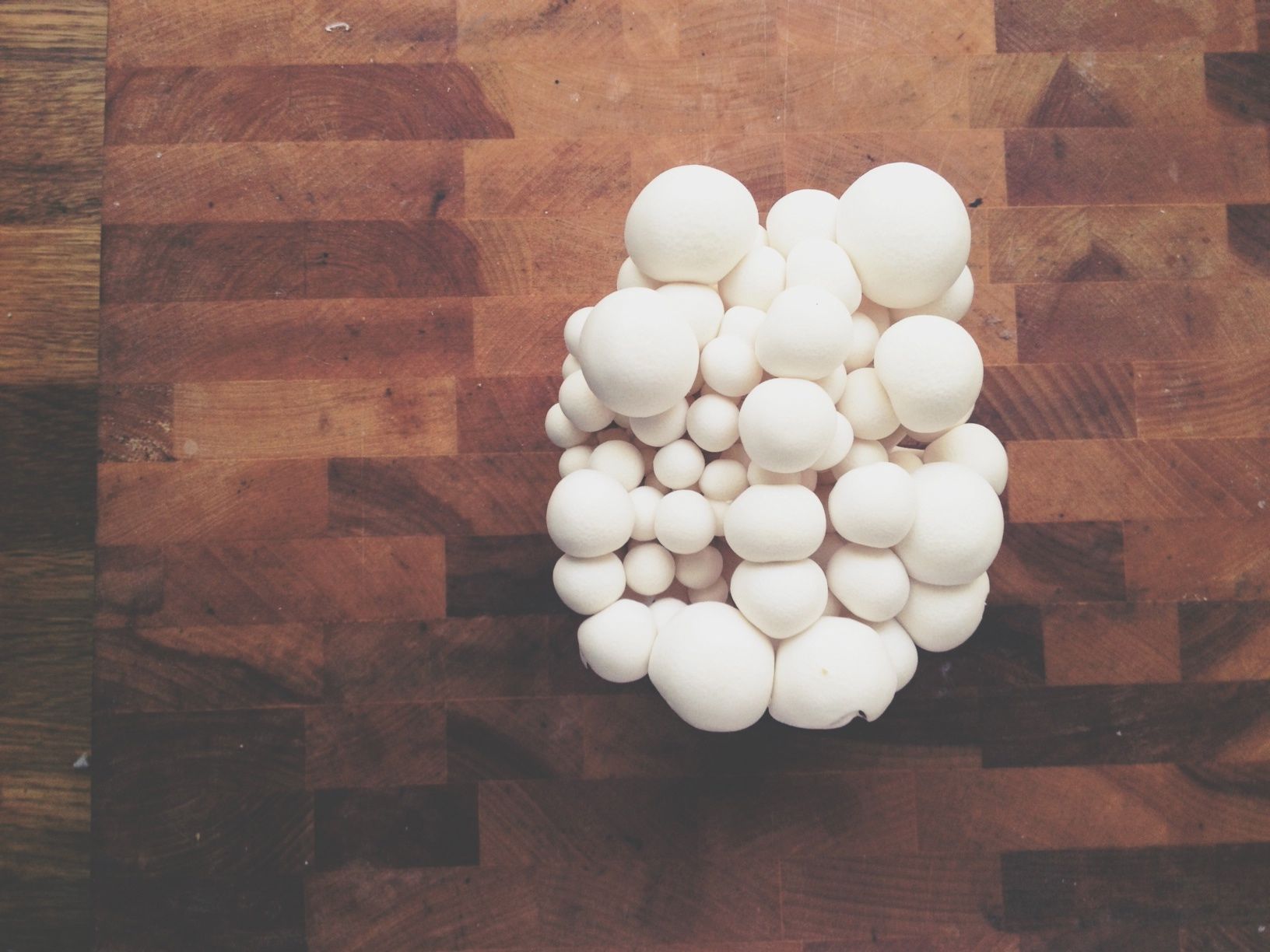It's contest week on Eat This Poem! After months of review, I'm excited to be announcing the first place winner of the inaugural ETP contest and share the accompanying recipe.
I read this poem three times before moving on to the rest of the pile. The words are striking in a raw, emotional way, at times violent and unforgiving. The story of marriage and divorce, and of tasting new flavors, was complex, not unlike the soup at the core of this poem. Linda Parsons Marion's poem is a testament to the power of food, memory, and the ties that bind us together. I hope you'll be just as moved and inspired as I was.
SUKIYAKI
My stepmother stirs swift tides of sesame
and soy, strange sea bubbling dark. Nights
she rocks that samurai blade, flank or roundsteak
soaking the drainboard, a brace of greentailed
scallions hacked headless. Taught the ancient ways
by her brother’s war bride, who shadowed him
to Tennessee with eyes downcast, she sugars the beef,
dipped in egg beaten bright as rising suns. Raised
on Boyardee and La Choy, I enter her kitchen
like a bamboo grove, part paradise, part unknowable,
exotic as distant Osaka. From one slippery shore
to another, my mother’s cold shoulder to the steam
of ribboned onions, red meat cut on the bias.
Ricebowl filled, I ladle an extra sorghum-slow
syllable, suk-i-ya-ki, my tongue trying new salt.
First published in A Tapestry of Voices: The Knoxville Writers’ Guild 2011 Anthology, 2010. Reprinted with permission from the Knoxville Writers' Guild.
Q&A With Linda Parsons Marion
Tell us a bit about the genesis of the poem and what compelled you to write it.I wrote “Sukiyaki” for an anthology published by the Knoxville Writers’ Guild whose focus was diversity, A Tapestry of Voices (2010). I wanted to continue exploring the food issues in my childhood regarding my mother and stepmother, with an added layer of ‘foreignness.’ I’d begun this exploration in my second book, Mother Land, with the poem “Mother Wars,” about my mother’s homemade macaroni and cheese and my preference (at that time) for Kraft mac ‘n cheese, used by my stepmom. Oh, how things have changed! I was drawn to the modernness and comfort of my stepmother, who was twenty when she married my father and is only thirteen years older than I. She loved to play and offered me the peace and refuge of a ‘normal’ homelife when I visited on the weekends. My mother suffers from bipolar disorder, an illness no one understood in those days (1950s-60s), least of all a child torn between two worlds.
"Sukiyaki" is a poem that evokes a vivid memory. How many years passed between the experience of trying sukiyaki for the first time and writing the poem?
Close to fifty years! I left my mother at the age of eleven to live with my dad and stepmother. I remember my stepmom making the dish after I was with them full-time. Her brother served in the Navy right after the war and married a Japanese woman, but the sukiyaki is the only Japanese dish I recall her making.
The poem depicts moving from one existence to another—mother to mother, culture to culture (Japan to Tennessee), familiar to exotic, uncertainty and fear to security, taste to taste, etc. The strangeness of sukiyaki, the dish and the name itself, illustrates my stepping into a new life, still feeling the guilt and angst of leaving my mother behind—that “slippery shore” I navigated, “part paradise, part unknowable.”
For someone raised on Chef Boyardee and La Choy, Japanese flavors must have been a shock to the palate. Did you take to the cuisine right away?
As I said, the sukiyaki symbolized the ‘newness’ I entered when I moved in with my dad and stepmom. How would I embrace this change? How would I begin again (especially during the rocky years of adolescence)? As for the dish itself, I most remember the saltiness of soy and the wonderful scallions and rice, but the soy sauce wasn’t that different from the Worchester we poured on our steaks! Salt, salt, salt. My dad was a traveling salesman and, when he returned home on the weekends, he wanted his beef—roasts, T-bones. Even so, all of my parents (and I) were raised on—and still love—traditional southern dishes like chicken and dumplings, fried fruit pies, cornbread, homegrown tomatoes, pintos, green beans cooked to death with fatback (but oh, so good), etc.
Download the anthology to read the rest of Linda's interview.
Japanese Hot Pot
Adapted from White on Rice Couple
Serves 4 to 6
Sukiyaki is a type of nab, or Japanese hot pot. Traditional recipes include thinly sliced beef and vegetables like mushrooms and green onions simmered in a flavorful broth of sake, soy sauce, and sugar. It is often served with a beaten egg that the vegetables are dipped in before eating, and is endlessly adaptable depending on the ingredients accessible to you. Essentially, it's Japanese comfort food.
This post from White on Rice Couple is a very comprehensive overview of Japanese hot pot cooking. Reading their description of the method reminded me of Italian minestrone in the sense that there are some general guidelines worth noting, but improvisation is encouraged. To this end, I made adaptations to suit my taste, and hope you feel inspired to do so as well. The ingredients below are easily adaptable, and you can serve your broth with white rice or soba noodles.
Vegetable oil
3/4 pound grass fed sirloin, thinly sliced
4-6 shallots, peeled and thinly sliced
1 Napa cabbage, halved lengthwise and sliced
4 scallions, sliced into 2-inch pieces
5 to 6 large Shiitake mushrooms, sliced
3 to 4 ounces bunapi mushrooms
4 cups vegetable stock
1/4 cup Japanese soy sauce (use the best you can find)
1 to 2 tablespoons sugar
1 bunch watercress
Cooked short grain white rice for serving
In a 5-quart cast iron stock pot, warm the pan over medium heat and add 1 tablespoon of oil. Add the beef slices in a single layer (as best you can), season with 1/2 teaspoon salt, and brown each side; place in a large bowl.
With the pot still on medium-high heat, add 2 tablespoons of oil, then add the shallots, cabbage, and scallions. It will take only a minute or two for the cabbage to wilt and the shallots to brown in places; reduce the heat to low and add the mushrooms. Stir to coat, season with 1 teaspoon salt, and cook for 3 to 5 minutes.
Add the stock, sugar, and soy sauce, and gently place the beef back in the pot; simmer for 10 minutes. Place the watercress on top, then cook 1 minute more, until just wilted. Place rice into bowls and ladle soup over the top.







